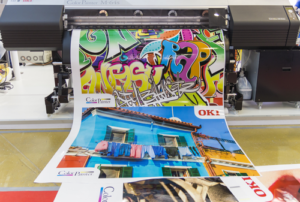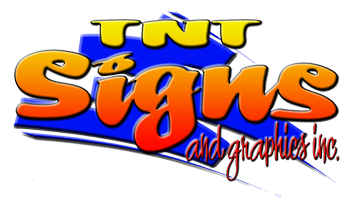Large-format printing gives you eye-popping color and economies of scale right out of the gate. Instead of paying upfront as you would with screen printing, you can kick things off on a budget.
That’s because large-format printing uses the familiar CMYK color palette to give you head-turning results and uses bigger printers, nozzles, and paper stock to get more quantity without sacrificing quality.
The best part for business owners who use large-format printing for their advertisements is that the UV inks in this kind of printing are resistant to fading and should go all 15 rounds for your business even when hung up outdoors.
So, there are clearly inherent cost efficiencies and advantages to large-format printing, but are there things that you can do to make large-format printing even easier and more attractive? There sure are!
Adjust Your Camera Settings

Twiddling with your camera and getting the biggest image size that still manages to have high resolution is the way to go. One of the next choices you’ll have to make is whether you want a JPEG or RAW file.
For large-format printing you’ll usually want to go with a RAW file for a few reasons. A RAW file captures all of the data that you hoover up with your camera’s sensor when you snap a photo.
The advantages to doing that is that you have more to work with in post-production, so to speak, than you would with a JPEG file. Although JPEG is a more popular file type, and even suitable for most applications, JPEG isn’t ideal for large-format printing.
JPEG files are compressed too much, which means that a lot of your data is lost. In other words, there’s not enough to work with to polish your image up later if you’re not totally satisfied with it because there’s not enough to work with.
Considering an important factor like brightness, JPEG files typically have brightness levels that top out at 256 whereas RAW files go past 16,000 – 60 times more! You can fine tune things like exposure and contrast much more with a RAW file.
Think about shooting RAW as giving you more ammunition to use later to make your large-format prints as crisp and clear as possible.
Make Sure the Numbers Add Up
Whether you’re deciding whether you have enough money to splurge this Christmas or enough time to catch a movie after work, the numbers have to add up. That goes for large-format printing as well.
You might be tempted to eyeball your image and somehow deduce how sharp the resolution will be maintained once you scale it up but there’s an easy rule of thumb that you’d be better off following.
When it comes to large-format printing you’re going to want to divide both the width and the height dimensions by 300 (the magical number that the experts say gives the best large-format resolution).
As an example, a RAW image that has a width of 4,800 and a height of 3,000 pixels would have great resolution for an image that’s 16 by 10 (4,800/300 = 16 and 3,000/300 = 10). The end goal is having 300 pixels per inch in a large-format print.
Large-format Prints and Vector Graphics
Vector graphics are made with something called paths instead of pixels, which means that you wont get a bug-eyed looking image that’s overpixilated when you go to scale up your image.
Capturing your images with RAW instead of JPEG, making sure you have enough pixels per inch for your file size (remember that magical number 300), and using vector graphics will make things go much smoother.
Contact us for more information on how you can turn a simple idea into a real high end graphical design.
